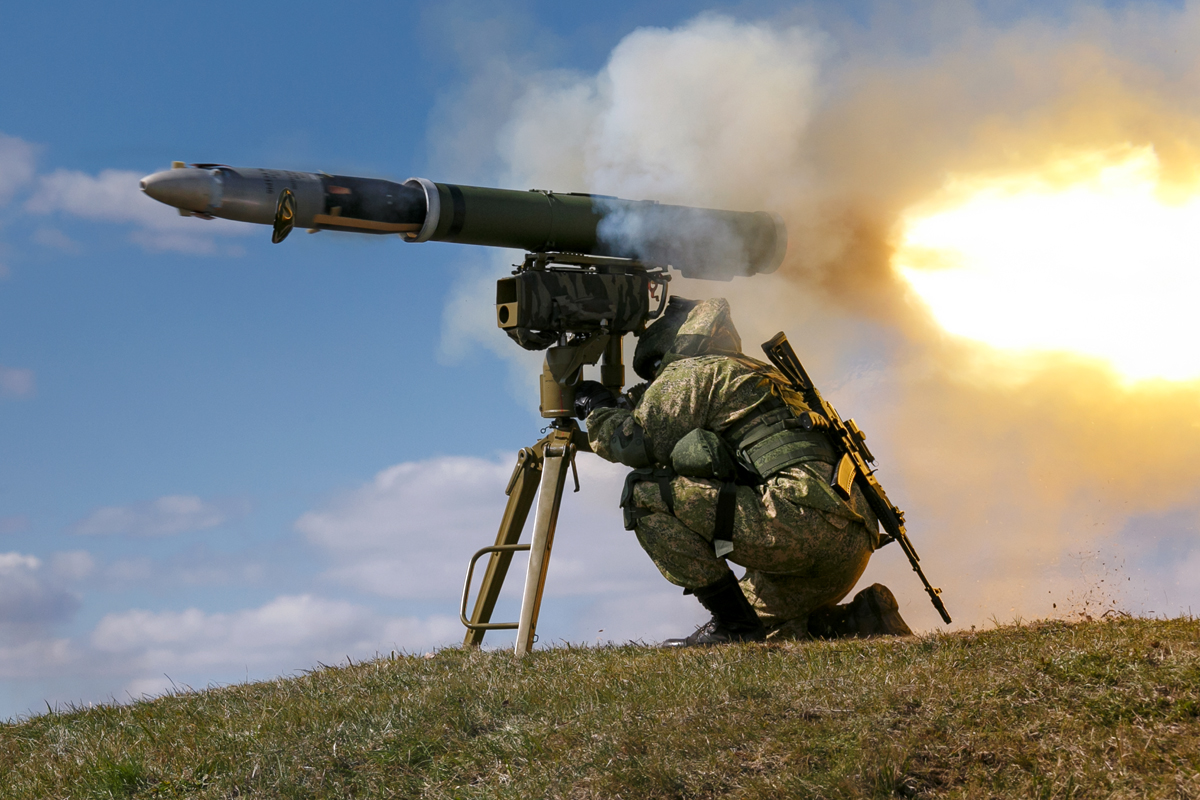A deadly Russian anti-tank guided missile (ATGM), ‘Kornet’, was used by the Syrian Kurds to destroy a Turkish armored vehicle involved in military operations against the civilian population near the Syria-Turkey border, according to reports.
The missile hit the combat vehicle that was on the move, throwing it almost 40 meters away and reducing it to only pieces of scrap metal, a local Russian news agency reported.
A video of the attack is doing the rounds in Russian media. It shows how the armored vehicle got tossed up in the air before landing on the ground almost 40 meters away because of the explosion.
As a result of this, the vehicle was completely wrecked and nothing was left of it except a few pieces of scrap metal. According to reports, the two Turkish soldiers traveling in the vehicle were killed in the attack.
Earlier, there were various media reports and later an acceptance by Turkey’s defense ministry that confirmed that two Turkish soldiers had succumbed when their armored vehicle came under attack in northern Syria.
The 9M133 Kornet (NATP reporting name AT-14 or Spriggan) is a Russian anti-tank-guided weapon. Its fearsome reputation is derived from its extreme range that’s far beyond most current anti-tank missiles.
Developed by the Instrument Design Bureau (KBP), the Kornet has a maximum range of 5.5 km. However, despite a significantly longer range, the Russian Kornet was not as advanced as the US Javelin in terms of guidance.
To outdo rival systems, KBP upgraded the Kornet. The upgraded Kornet-EM has twice the maximum range of its predecessor. The Kornet’s tandem HEAT warhead is just as intimidating for its size.
With a 152 mm diameter, it is one of the largest and most powerful ATGMs ever built. This feature is meant to defeat the threat posed by Explosive Reactive Armor (ERA) on modern tanks. The 9K133 Kornet was first introduced in 1994 and has since inspired subtle, albeit persistent, demand from many countries—including states that weren’t traditionally customers of Russian hardware. This missile was inducted by the Russian Army in 1998.
The Kurdish-Turkey Conflict
Turkey wants to push away the members of a Syrian Kurdish militia called the People’s Protection Units (YPG) from its border. The YPG is seen as a terrorist organization by the Turkish leaders.
According to them, it is “an extension of the Kurdistan Workers’ Party (PKK)”, which has been known for fighting for Kurdish autonomy in Turkey for decades.

The YPG works as an alliance of Kurdish and Arab militias, known as the Syrian Democratic Forces (SDF). The SDF drove the Islamic State out of a quarter of Syria with the help of a US-led multinational coalition, according to BBC.
When the IS was defeated by the US in March 2019, Turkish President Recep Tayyip Erdogan proposed the idea to create a “safe zone” clear of YPG fighters in north-eastern Syria so that refugees could be resettled there.
Both US and the YPG fighters complied with this and the US agreed to establish this ‘safe zone’ with Turkey in August. However, after two months, after Erdogan decided to set up an operation to create a 440 km long “safe zone”, the US troops pulled back.
This angered the SDF as it said that they had been “stabbed in the back” by the US and warned the defeat of IS might be reversed. Later, on October 9, Turkey announced that it was beginning an assault on the Kurdish-led militia in north-eastern Syria. Syrian Kurds approached the government of Syria as well as their ally for their support, the BBC report added.
— Written by Kashish Tandon